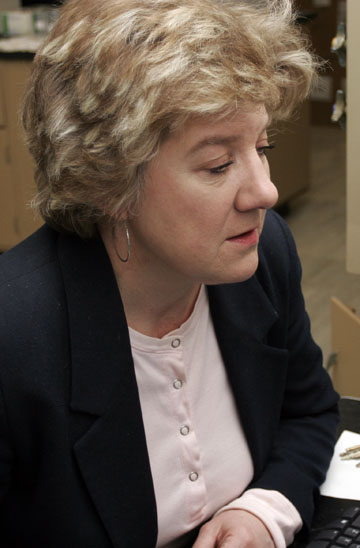 |
 |
| Home Research Group |
TERRY L. DOWD Associate Professor Department of Chemistry Brooklyn College 2900 Bedford Ave. Brooklyn, N.Y. 11210
TELEPHONE
EMAIL ADDRESS TDowd@brooklyn.cuny.edu
EDUCATION
Syracuse University Ph.D. (1987) Physical Chemistry
Southern Connecticut State College B.S. (1979) Chemistry
Postdoctoral Fellow, Department of Physiology and Biophysics Albert Einstein College of Medicine (1986-1987)
CAREER
2005 – Present Associate Professor, Department of Chemistry Brooklyn College, City University of New York
2005- Present Visiting Assistant Professor, Department of Neuroscience Albert Einstein College of Medicine, Bronx, New York
1996 – 2004 Assistant Professor, Division of Environmental Sciences, Department of Pediatrics, Montefiore Medical Center, Albert Einstein College of Medicine, Bronx, New York
1992 - 1996 Instructor, Department of Physiology and Biophysics, Albert Einstein College of Medicine
1987 - 1992 Research Associate, Department of Physiology and Biophysics, Albert Einstein College of Medicine
1986 - 1987 Postdoctoral Fellow, Department of Physiology and Biophysics Albert Einstein College of Medicine.
RESEARCH INTERESTS
My research has produced 19 papers and 1 book chapter. I have always used physical techniques to study biological or medically related questions. I have used NMR spectroscopy to investigate alterations in intracellular cations in various diseases and conditions. I have investigated alterations in intracellular cations in hypertensive rat kidneys as well as in kidneys from hyperglycemic rat models. Since bone is the major reservoir of body lead I was interested in the effect of lead toxicity on intracellular cations and bioenergetic rates in perfused bone cells. My interests have evolved into the area of protein structure and functional studies and alterations in structure due to lead toxicity and amino acid mutations. Information regarding molecular function can be obtained by solving the high resolution structures of a protein or peptides.
CURRENT RESEARCH PROJECTS My research is focused on structural and functional studies of the bone protein osteocalcin. Osteocalcin is a small protein of 49 amino acid residues and is one of the most abundant noncollagenous proteins found in bone, dentin and cementum. In-vivo studies with the osteocalcin knock-out mouse suggest osteocalcin may function to limit bone formation. The effect of osteocalcin on crystal size and “perfection” suggest a role in bone remodeling. I am particularly interested in how the effects of metal ions, toxic (Pb2+) and essential (Mg2+) alter the structure and mineral binding properties of osteocalcin and how these effects are manifested in detailed bone mineral properties and bone biomechanical properties in a living animal. I use techniques such as ELISA protein assays, Fourier Transform Infrared Microscopy and Imaging, MicroCt imaging and Atomic Absorption spectroscopy to conduct this research.
I am also interested in structure function relationships in N-terminal peptides of the gap junction protein Connexin. Gap junctions allow the passage of small molecules and second messengers between cells. They can be modulated by voltage dependent gating. There is evidence that the N-terminus of some Connexins may act as a voltage sensor and is located within the channel pore. We are investigating the structure of a functional Connexin channel by structural studies of Connexin N-terminal peptides (both mutants and wildtype) using high resolution NMR spectroscopy.
|
